I’m Reiner Stockhausen and I’d like to share with you the story behind my game Orléans.
The history of Orléans began 10 years ago when I had the first idea for a basic concept. This original idea was rather abstract: Each player starts with a fixed amount of several colors and has to spend these colors wisely to perform all sorts of actions during the game. Different actions use different colors, and while in principle it’s possible to perform every action on its own, it’s not possible to perform all combinations of actions. For instance: If you use up all your Red in action A and B, other actions you need Red for aren’t possible anymore. Later, these colors evolved into Character Tiles and the game idea became Orléans. In Orléans, players get a new selection of Character Tiles in each round, by taking them randomly out of their bag. Players then use these tiles to perform actions.
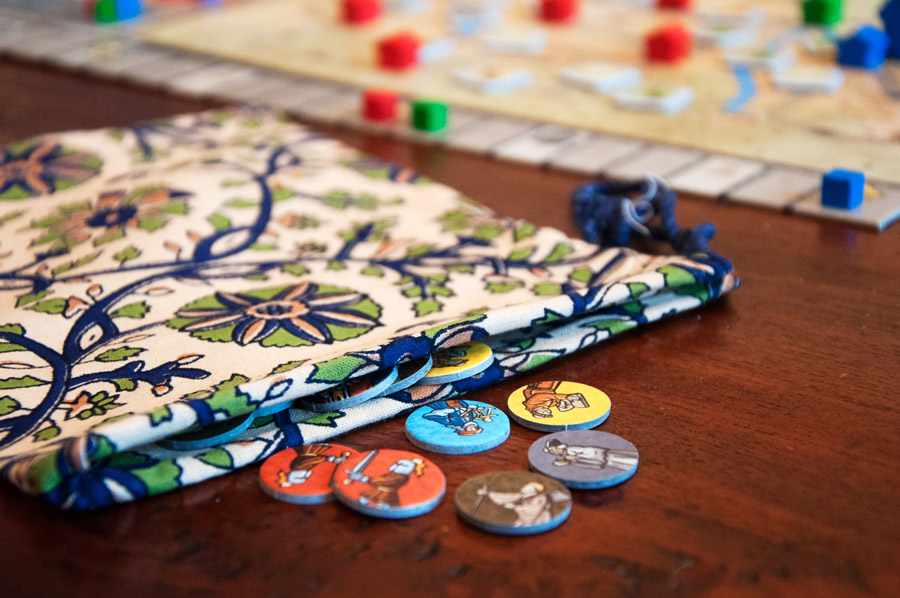
Before Orléans, I realized this concept in another game, Siberia. At the fair in Essen in 2011, Siberia did get a lot of attention, but, unfortunately, at the start of the fair the game hadn’t been completely manufactured yet, so we could only show prototypes. It took until 2012 for Siberia to become available. The sales were quite good, but as the board game market is really fast-moving, the hype about Siberia had already blown out and the game could not settle well in the market.
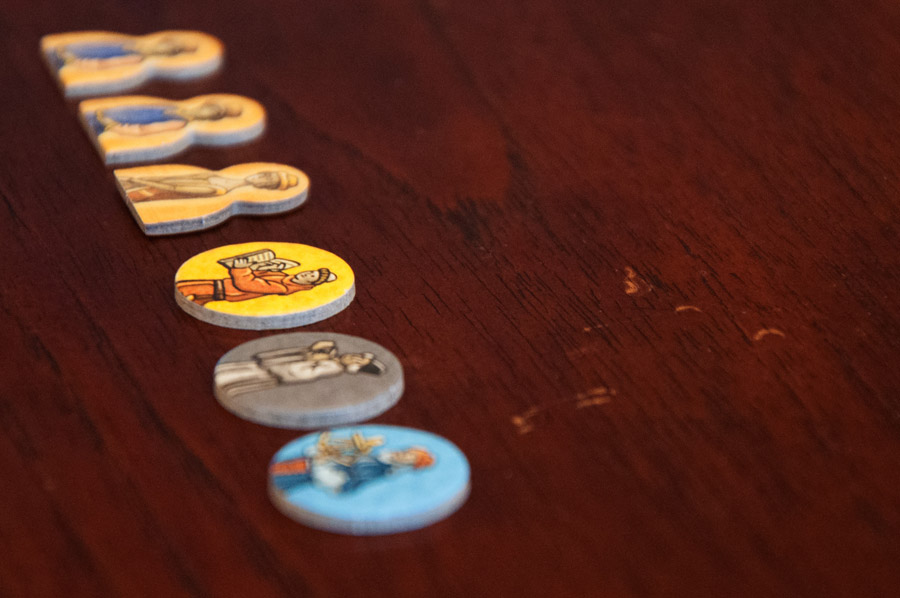
After implementing this core idea in Siberia, I continued the development of Orléans. Both in Siberia and in Orléans players draw random tiles out of a bag. The big difference is that in Siberia there is only one bag for all players, while in Orléans each player has his own bag and has control over which Character Tiles and how many of them get in the bag. If you want to draw nearly only knights, you can influence the additions to your bag to achieve this. On top of this, by using different Place Tiles, players are able to give certain Character Tiles a kind of joker function which makes the player less dependent on the random drawing from the bag. In the extreme case that the player has exactly the number of Character Tiles in his bag that he may draw and exactly those ones he needs for his action, the randomness is even reduced to zero! This makes the bagbuilding-mechanism quite a management challenge in Orléans. Beyond this, players have to find strategies to place their Character Tiles in the best way.
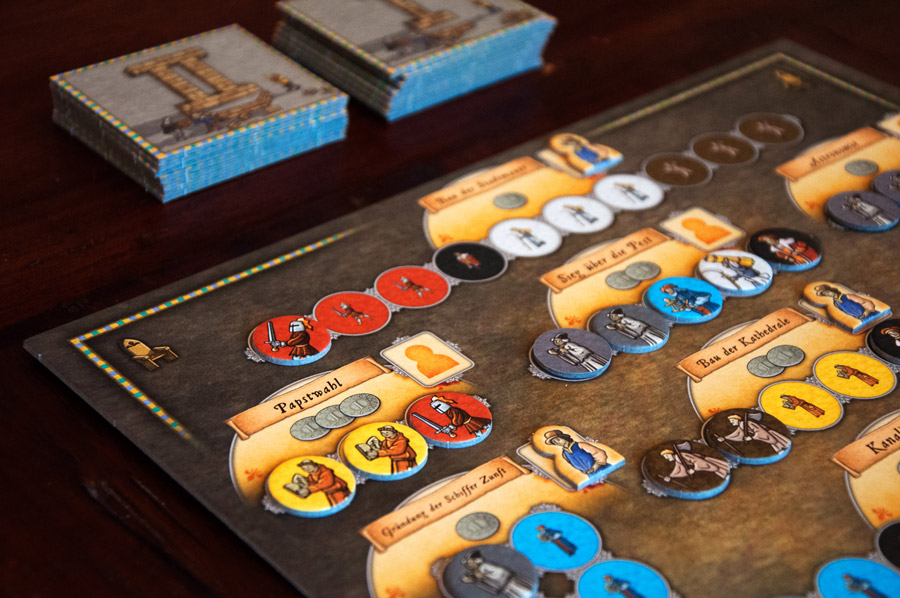
During the playtesting phase of Orléans, I asked sceptics to find a killer strategy that would break the game. After hundreds of playing sessions we concluded that there is no perfect strategy. The actions of the other players are always able to influence the results, so when two gamers follow the same strategy, none of them will gain the optimal victory points because of the competition.
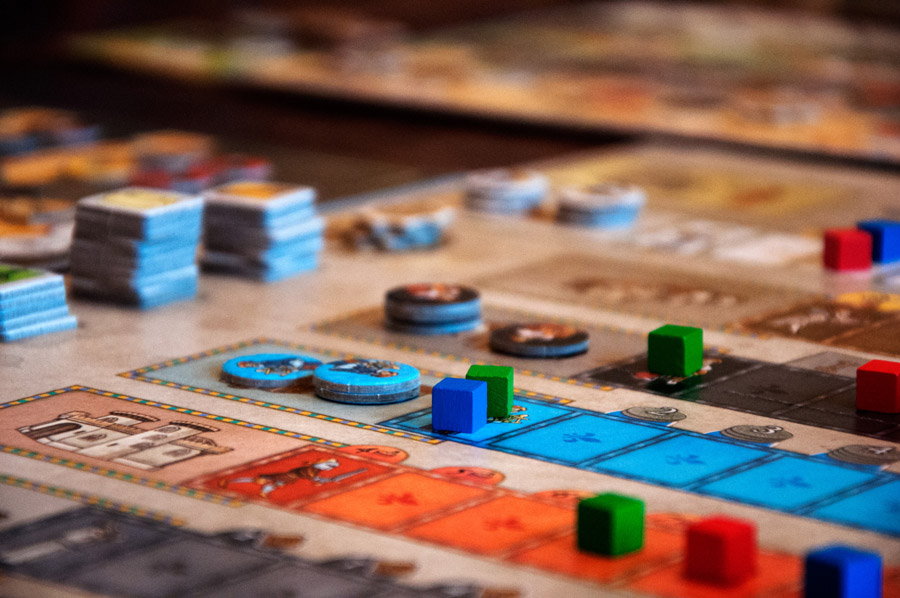
The medieval topic of Orléans was more or less self-evident while developing the game. The different crafts and different characters that are well distinguishable due to their civil status matched well to a medieval scenario. Concerning the European region which had to be assigned to the game it was important to find a region where it is possible to travel by water as well as on land. And finally, the area and the title had to be well-known and immediately associated with the medieval topic. So, we chose Orléans and the area around the river the Loire as the setting of the game.
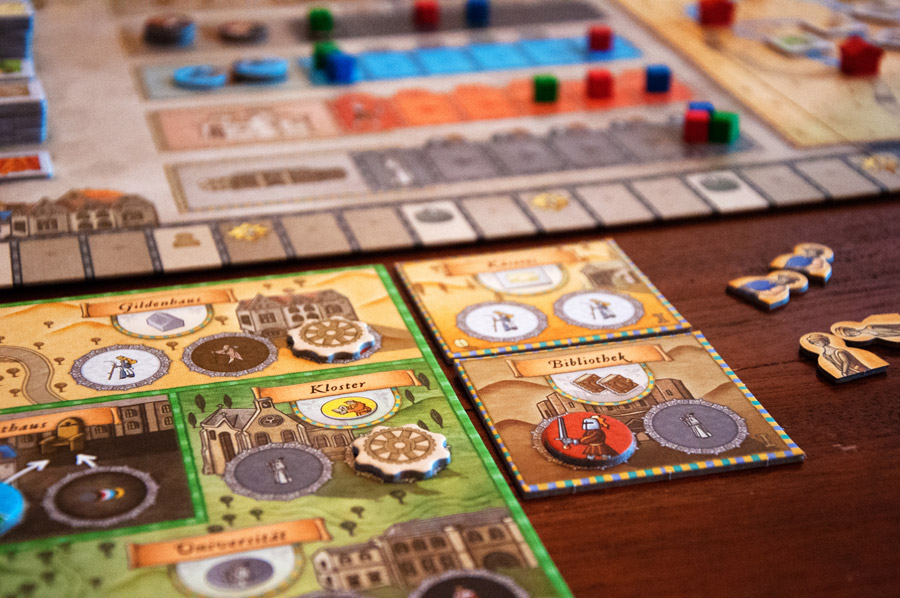
For the artwork I had in mind a mixture of the Sacral-Christian art of the early late middle age and the easygoing, cartoon-like style of Klemens Franz. In my opinion, the artwork is successful in making the usually rather stiff medieval art accessible to board gamers.
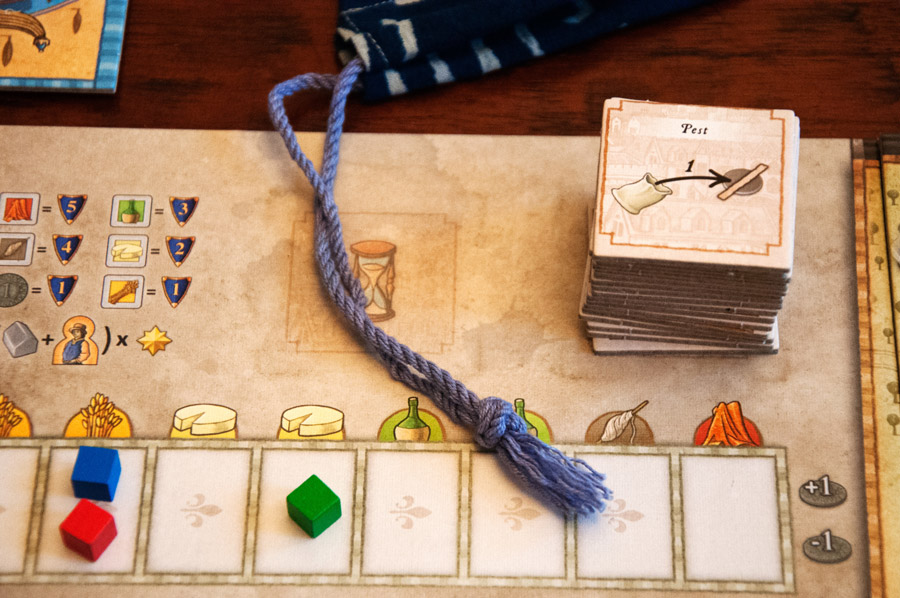
From the very first idea until the release of Orléans, I was not inactive in doing other things. From my first publication in 1998—the game Freibeuter published by Hans-im-Glück—until the founding of my own publishing house in 2009, several of my own game designs have been released by other publishers, such as Alea, Amigo and Schmidt-Spiele. Like other board game designers, I have been working on my game designs next to my normal job. This means a long development phase: testing prototypes with family and friends, sending them to publishers, getting them back (with a refusal). This “school of hard knocks” was finally over after my first publications. Together with Jens-Peter Schliemann I worked on two tailor-made games for Clementoni. One was according to a famous German TV-Show, the other one was based on the comedies of a famous German filmmaker. However, the most successful game during that time was a small card game named Fußball-Ligretto. It was sold more than 150.000 times and is now published under the name of Crazy Kick by my own publication company dlp-games.
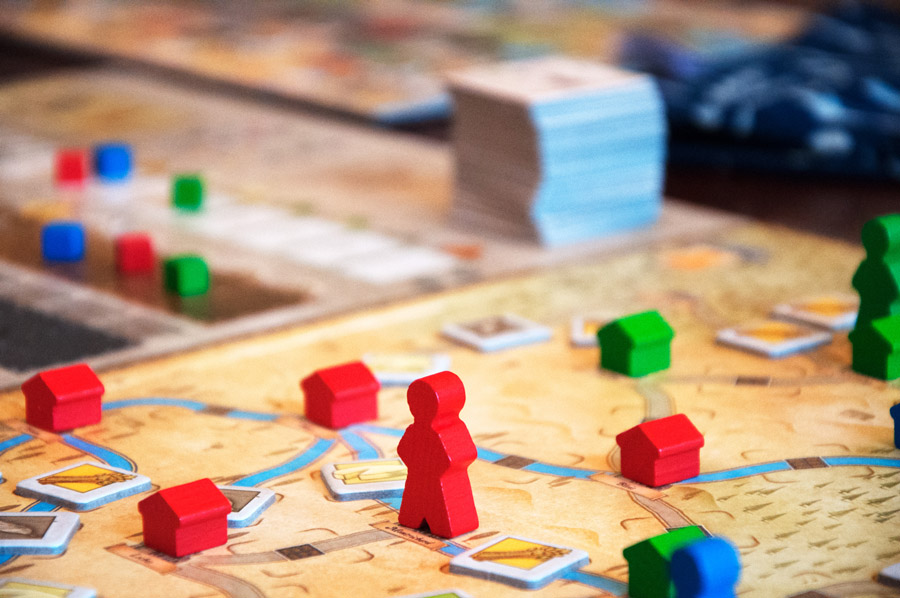
When I had my first success as a game designer, the idea came to mind to found my own publishing company. Finally, in 2009 I had my own booth for the first time in Essen at Spiel, presenting the games I published myself. The publicity and sales rates of my own published games increased year after year. With Bangkok Klongs by Martin Schlegel in 2010 and Citrus from Jeffrey D. Allers in 2013, 2 external authors have been published by dlp games. But it took until 2014 until I had the really big success: Orléans. During the fair it was already one of the most widely noted games and it took the first place at the Fairplay-Ranking almost constantly during the fair. Only at the final scoring it landed second place, behind AquaSphere
.
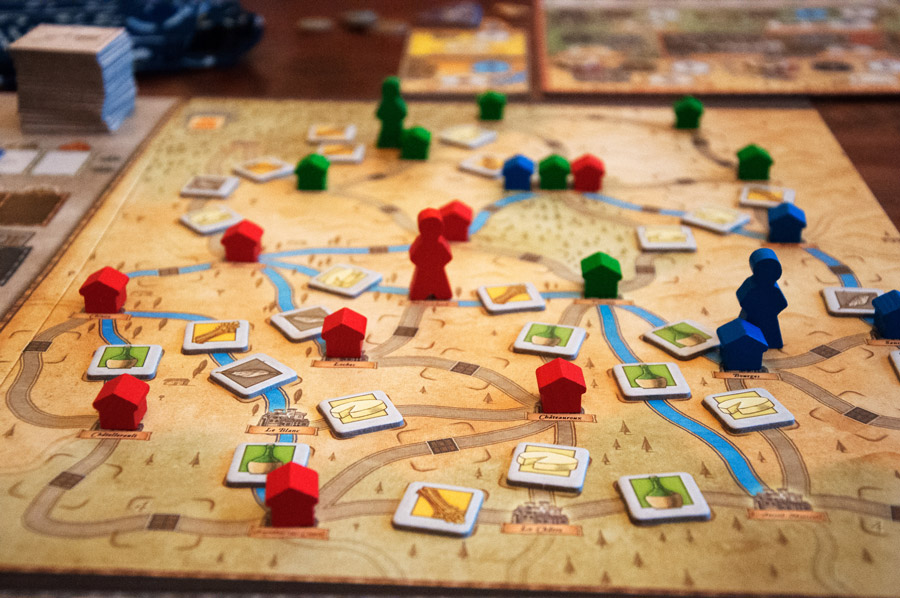
This success was continued by several nominations for national and international board game awards, such as a nomination for the famous “Spiel des Jahres” and the “Deutscher Spielepreis” (rank 2 for Orléans!), the first rank was shortly denied, but due to that Orléans has been presented as “eternal bridesmaid” and it was certainly the game getting the most attention in Germany in the year 2015.
But how to explain this success of Orléans? Beside the new mechanism, also known as the “bag-building” game (which means to draw tiles from a bag to activate different actions), I think, Orléans is so well-received because it’s possible to play this game in so many different ways. There are several main strategies, but inside the main strategies, a lot of ways to play can be combined. Using the Place Tiles, that are unique in the game every time you play, there are nearly endless possibilities to combine micro-strategies.
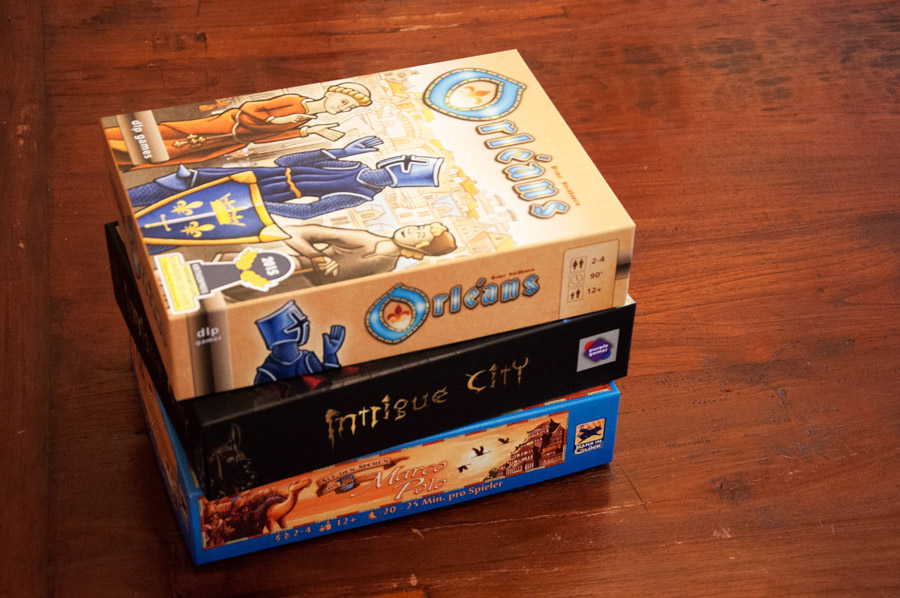
It is always interesting, that each variation added to the game, for example a new Place Tile, can have the effect of being so strong that, as a result, a new strategy may appear. It always depends on how to combine single elements and it is fun to see new things you haven’t seen before every round you play. Even two years after the release (and in the meantime two big expansions) there are enough ideas available to enrich the game with new variations. As long as new “input” for Orléans is requested I will work to provide gamers with new concepts for this game, although ideas for a new game are in the foreground for now. For 2017 a new board game is scheduled. If it can trump Orléans is, of course, written in the stars. But again it will be a big “gamers’ game” and, not the least, the experiences I’ve gone through with Orléans will have an influence on my next game designs.
Photo credits: Reiner Stockhausen /  Niels Muñoz (@movetherobber). Used with permission.
Niels Muñoz (@movetherobber). Used with permission.
Get Orléans, Orléans: Invasion
, or Orléans: Handel and Intrige
on Amazon.
Did you like this story? Please share or comment. Go to this page to submit a story yourself. Subscribe to our online magazine here!
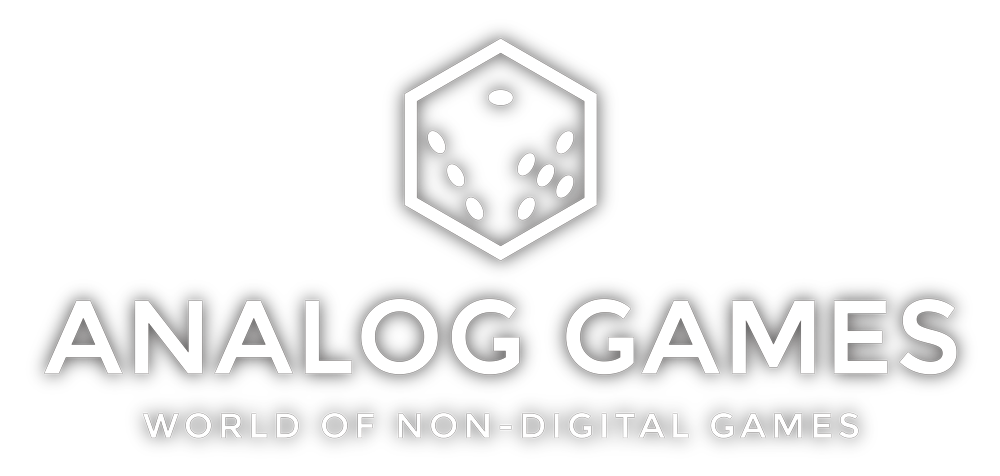
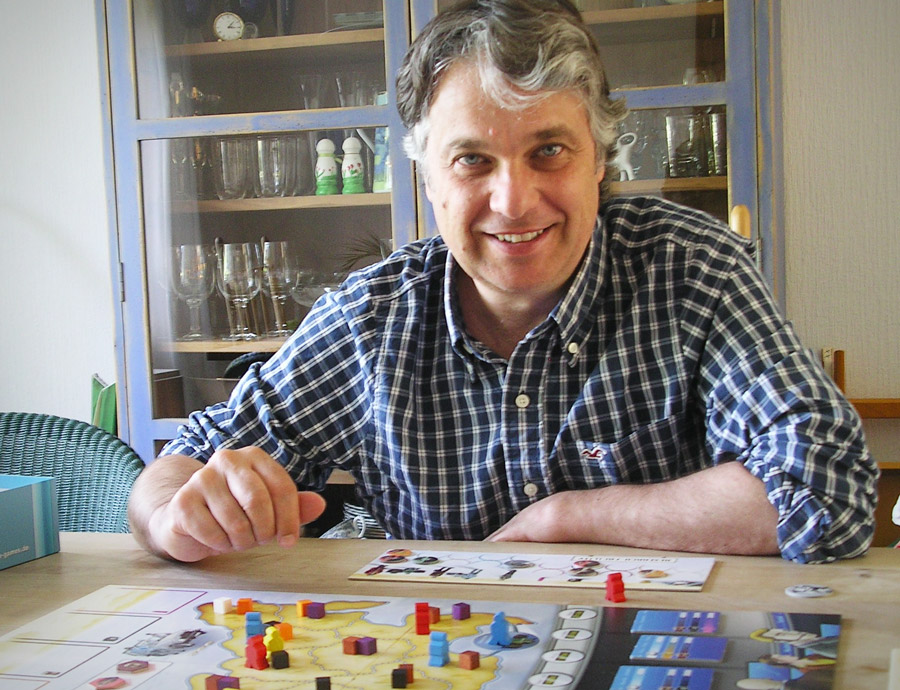
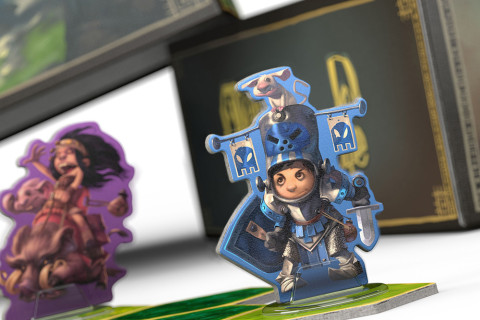
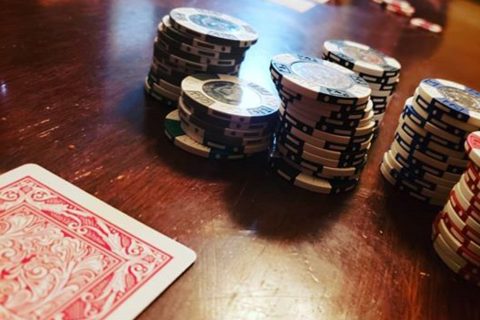
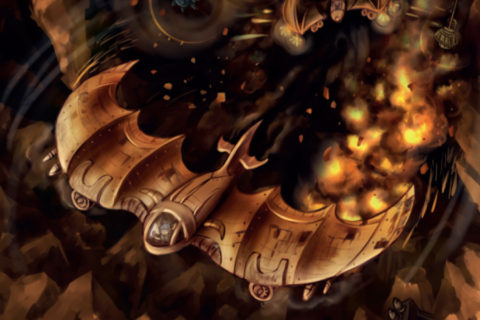
Excellent bag building game. It is neat how there are multiple paths to victory. Love it.
After reading your article, it reminded me of some things about gate io that I studied before. The content is similar to yours, but your thinking is very special, which gave me a different idea. Thank you. But I still have some questions I want to ask you, I will always pay attention. Thanks.
Your point of view caught my eye and was very interesting. Thanks. I have a question for you. https://accounts.binance.com/en/register-person?ref=P9L9FQKY
Awesome blog. I have read and thought about what you said. I have bookmarked it and I am looking forward to reading new articles. Keep up the good work!Negan Jacket Walking Dead
Excellent article. Very interesting to read. I really love to read such a nice article. Thanks! keep rocking.
The Christmas Chronicles Mrs Claus Leather Coat
It’s a game. Five dollars is free. Try it It’s not an easy game
->-> 토토사이트
It’s a game. Five dollars is free. Try it It’s not an easy game
->-> 카지노사이트 .COM
It’s a game. Five dollars is free. Try it It’s not an easy game
->-> 카지노사이트 .COM
It’s a game. Five dollars is free. Try it It’s not an easy game
->-> 토토사이트 .COM
The best faux leather jackets are the ones that actually make you happy. And our effort is to provide you with summer sale. So visit our site now.
Thank you very much for sharing, I learned a lot from your article. Very cool. Thanks.
I don’t think the title of your article matches the content lol. Just kidding, mainly because I had some doubts after reading the article.
black leather jacket with fur are a great choice for adding subtle sophistication to your look.”
Your point of view caught my eye and was very interesting. Thanks. I have a question for you.
venoplus 8 scam: venoplus 8 scam
Pineal Guardian scam: Pineal Guardian scam
Pineal Guardian scam: Pineal Guardian scam
Thank you for your sharing. I am worried that I lack creative ideas. It is your article that makes me full of hope. Thank you. But, I have a question, can you help me?
Your point of view caught my eye and was very interesting. Thanks. I have a question for you. https://www.binance.info/en-IN/register?ref=UM6SMJM3
Thank you for your sharing. I am worried that I lack creative ideas. It is your article that makes me full of hope. Thank you. But, I have a question, can you help me?